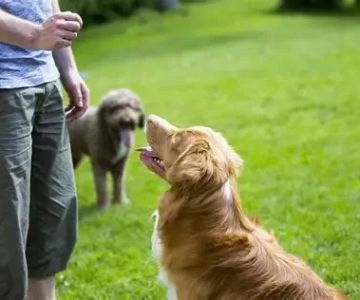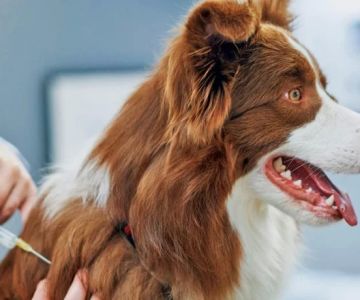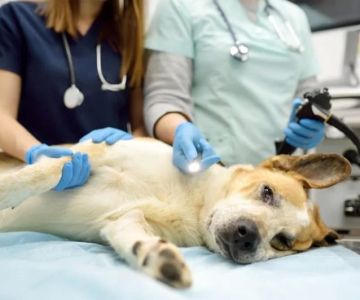How to Clean Your Dog’s Teeth at Home: A Guide to Healthy Smiles
- Introduction to Dog Dental Care
- Why Cleaning Your Dog’s Teeth is Essential
- Tools You Need to Clean Your Dog’s Teeth
- Step-by-Step Guide to Cleaning Your Dog’s Teeth
- How Often Should You Clean Your Dog’s Teeth?
- Common Dental Issues in Dogs
- When to See a Veterinarian
- Final Thoughts on Dog Dental Care
Introduction to Dog Dental Care
Maintaining your dog’s dental health is an essential part of their overall well-being. Just like humans, dogs need regular teeth cleaning to prevent plaque buildup, gum disease, and other dental issues. A good oral hygiene routine not only ensures your dog has fresh breath, but it also promotes their health and longevity.
In this article, we will guide you on how to clean your dog’s teeth at home, providing step-by-step instructions and tips on the best tools to use. By implementing these simple practices, you can help your dog avoid costly vet visits and serious dental health problems.
Why Cleaning Your Dog’s Teeth is Essential
Oral health is often overlooked when it comes to pet care, but it’s just as important as regular exercise and proper nutrition. Here’s why keeping your dog’s teeth clean is crucial:
1. Prevents Plaque and Tartar Buildup
Just like humans, dogs accumulate plaque and tartar on their teeth. If left untreated, plaque can harden into tartar, which can lead to gum disease and tooth decay. Regular cleaning helps to prevent this buildup and ensures your dog’s teeth remain healthy.
2. Reduces the Risk of Gum Disease
Gum disease is common in dogs, especially as they age. It can lead to painful symptoms and even tooth loss. Regular brushing helps prevent gingivitis and periodontal disease, which are common causes of gum disease in dogs.
3. Improves Your Dog’s Overall Health
Dental health is closely linked to your dog’s overall health. Poor dental hygiene can contribute to heart disease, kidney disease, and other systemic health problems. By cleaning your dog’s teeth regularly, you help support their entire body’s health.
Tools You Need to Clean Your Dog’s Teeth
Before you start cleaning your dog’s teeth, it’s important to have the right tools. Here are the basic items you will need for effective dental care:
1. Dog Toothbrush
A toothbrush designed specifically for dogs is a must. These brushes are softer and smaller than human toothbrushes, making them more comfortable for your dog. Some brushes have angled heads, which help reach back teeth more easily.
2. Dog Toothpaste
Never use human toothpaste on your dog, as it contains ingredients that can be harmful if swallowed. Instead, opt for dog-friendly toothpaste, which comes in flavors like poultry or peanut butter that your dog will enjoy.
3. Dental Chews or Toys
In addition to brushing, dental chews and toys can help reduce plaque and tartar buildup. These products often have a textured surface that massages the gums and scrapes away debris while your dog chews.
4. Mouth Rinse
For extra freshness, you can use a dog-friendly mouth rinse to reduce bacteria in your dog’s mouth. These rinses are typically safe and easy to use, offering a simple way to support your dog’s dental hygiene routine.
Step-by-Step Guide to Cleaning Your Dog’s Teeth
Now that you have the right tools, it’s time to start cleaning your dog’s teeth. Follow this simple step-by-step guide:
1. Get Your Dog Comfortable
Before you begin brushing, make sure your dog is calm and comfortable. You may want to start by gently petting them and getting them used to the idea of having their mouth touched.
2. Apply Toothpaste to the Toothbrush
Apply a small amount of dog toothpaste to the toothbrush. Make sure to choose a flavor your dog likes to make the process more enjoyable for them.
3. Start Brushing Their Teeth
Begin by brushing the outer surfaces of your dog’s teeth in small circular motions. Focus on the back teeth, as these tend to accumulate more plaque. Be gentle and don’t rush; it’s important to make this a positive experience.
4. Clean the Gums
Don’t forget to clean along the gum line, where plaque and tartar tend to build up. Gently massage the gums while brushing to help stimulate blood flow and keep them healthy.
5. Finish with a Rinse
If you’re using a mouth rinse, apply it after brushing to help freshen your dog’s breath and kill bacteria. Make sure to follow the instructions on the product for best results.
How Often Should You Clean Your Dog’s Teeth?
For optimal oral health, it’s recommended to clean your dog’s teeth at least 2-3 times a week. However, daily brushing is ideal, especially for dogs prone to dental issues or those with a history of gum disease.
Consistency is key—by establishing a regular routine, you help prevent plaque buildup and ensure your dog’s teeth stay clean and healthy.
Common Dental Issues in Dogs
Even with regular brushing, some dogs may develop dental issues. Here are a few common conditions to watch out for:
1. Tartar Buildup
Tartar buildup can occur even with regular brushing. If left untreated, it can lead to gum disease and tooth loss. A professional dental cleaning at the vet may be necessary to remove stubborn tartar.
2. Gum Disease (Gingivitis)
Gingivitis is an early stage of gum disease and is often characterized by redness and swelling of the gums. If not treated, it can progress to more serious periodontal disease.
3. Tooth Loss
Tooth loss can occur if gum disease is left untreated for too long. Regular dental care can prevent this, but it’s important to monitor your dog’s teeth for signs of discomfort or looseness.
When to See a Veterinarian
If your dog has persistent bad breath, swollen gums, or seems to be in pain when eating, it’s time to consult a veterinarian. A vet can perform a thorough dental examination and provide a professional cleaning if needed.
If you notice any of the following, it’s essential to seek veterinary care:
- Bad breath that doesn’t improve with regular brushing
- Visible tartar buildup
- Swollen or bleeding gums
- Loss of appetite or difficulty chewing
Final Thoughts on Dog Dental Care
Cleaning your dog’s teeth at home is a simple yet effective way to maintain their dental health. By incorporating this routine into your dog’s care, you can prevent many dental issues and keep their smile shining brightly. Remember to visit your veterinarian for regular checkups and to address any concerns.
For more advice on keeping your dog healthy, or to schedule a dental checkup, visit Hidden Brook Veterinary.











